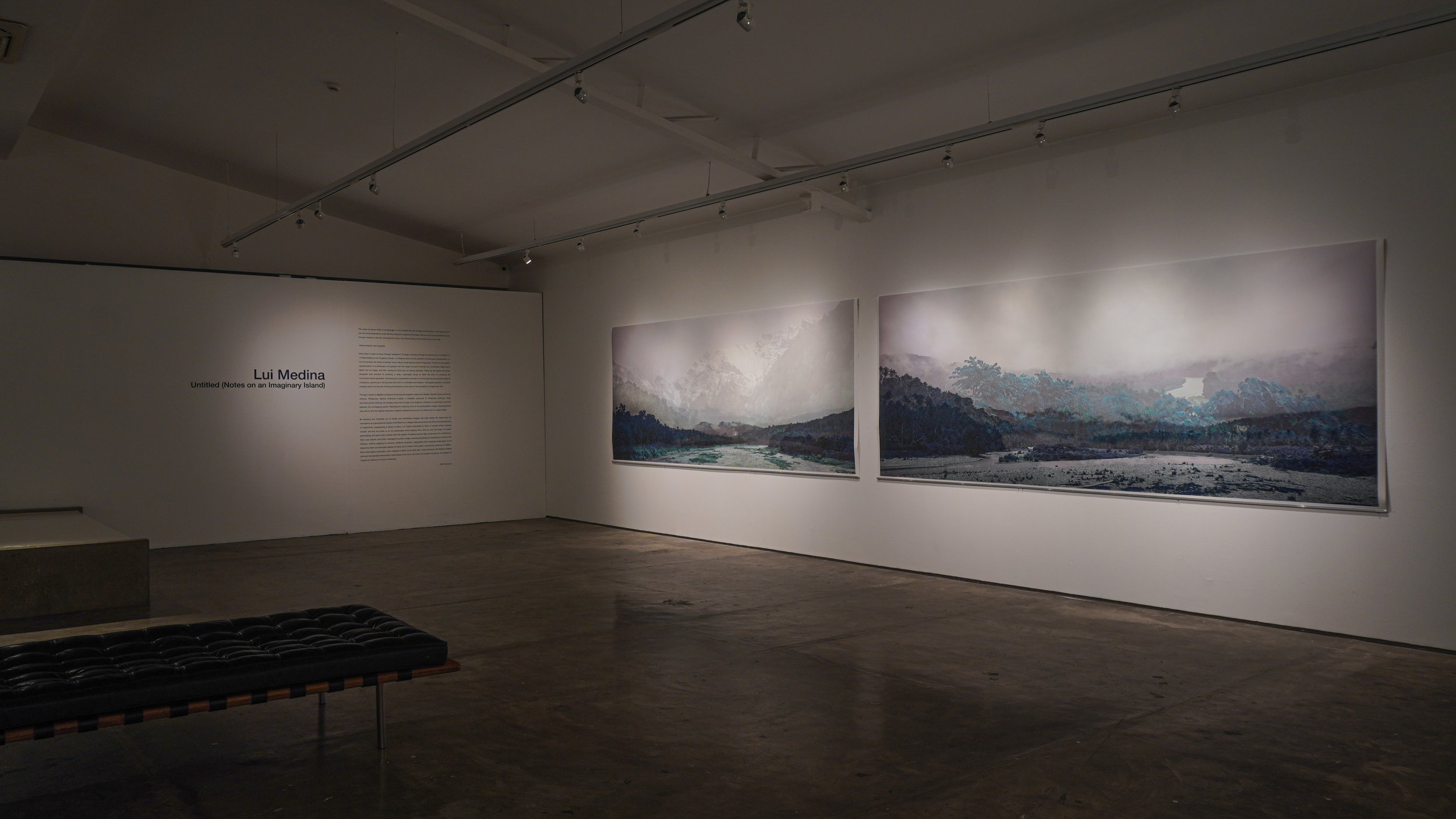Lui Medina – Untitled (Notes on an Imaginary Island)
The noise my leaves make is my language. In it is tunneled the roar of seas of a lost ocean. It is a fresh sound. Let me not be ashamed to write like this, because it supports this thesis, that our only true apprehensions are through metaphor, that the old botanical names, the old processes cannot work for us. Let’s walk.
–Derek Walcott, Isla Incognita
What does it mean to know through metaphor? To study a territory through the glistening of its foliage? In 'Untitled (Notes for an Imaginary Island),' Lui Medina returns to the question of landscape representation, or the rift between the sheer immensity of the natural world and the limits of figuration. To aim for the realistic representation of a landscape is to grapple with the weight of such immensity by momentarily flattening its depth into an image, and then naming its fixed way of looking absolute. These are the sights that bring, alongside their promise of certainty, a deep, undeniable sense of relief; the balm of rendering the incommensurable agreeable. Yet looking at a represented mountain is not the same as journeying through its woodlands, perceiving in the process that which is vulnerable and hesitant – the spaces between concepts. Certainty locks out the risk of erring at the factual, at the price of the possibility to imagine the real.
Through a series of digitally composed landscape photographs captured in Bobbio, Northern Italy and Davao Oriental, Philippines, Medina embraces instead a malleable approach to landscape portrayal. More disorienting than relieving, her strategy responds to a logic of contingency, shifting in a coastal back and forth between the overlapping planes. Resisting the totalizing force of the photographic image, superimposition here affirms that the highest-resolution snapshot represents as much as a drawn line on a paper sheet.
By devising new territories out of insular and continental imagery, the artist seizes the island from its conception as a geographical feature to its effect as an allegory that accounts for the hints and contradictions of subjectively experiencing a sense of place. It is nearly impossible to think of oneself without placing oneself, and this act binds us to our landscapes while shaping them and us, over and anew. An island permutating, the same murk mantles both the western Cordillera and the Alps, producing in its multiplicity a third –and a fourth, and a fifth– entangled mountain ranges, grasping landscape as mediated by memory and intimacy, without negating its expanse. Medina’s exercise in geopoetics thus imagines landscapes not to determine them as extricated objects of study but to render them plastic as evolving instances of relation. Each rearranging meaningful, each metaphor truthful. At an artist talk, I heard someone ask Medina whether she ever incorporates references to real places in her work. My works are entirely real places, she replied. To imagine an island is to know it otherwise.
Abril Cisneros





